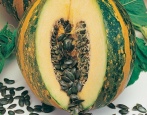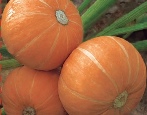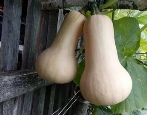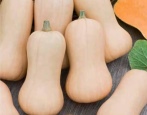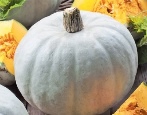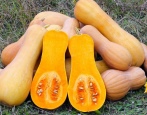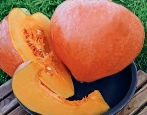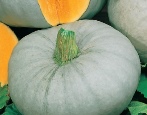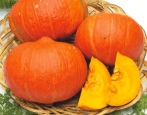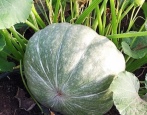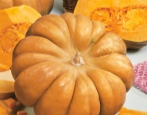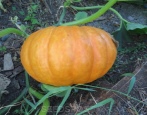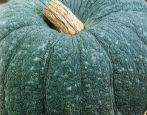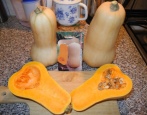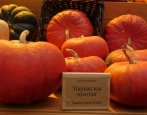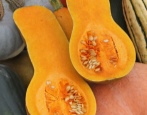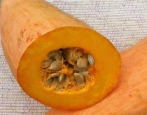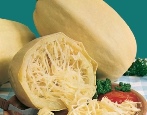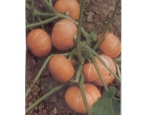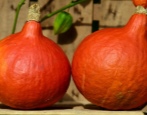
- Authors: Massachusetts Agricultural Experiment Station, USA
- Name synonyms: Butternut, Butter Nut
- Growth type: powerful
- The form: pear-shaped
- Weight, kg: 5-7
- Coloration: creamy beige
- Color of the pulp: bright orange
- Pulp (consistency): dense, oily
- Taste: with a nutty flavor
- Ripening terms: early maturing
Pumpkin, and even nutmeg, is presented all over the world in the widest variety assortment. One of the representatives of the nutmeg category is Nut Butter (synonyms for Butternut, Butter Nut, Peanut Pumpkin). The fruits of the universal variety, which have reached physiological ripeness, are distinguished by a well-noticeable nutty flavor, which makes it special in the Muscat collection.
Breeding history
The unique variety appeared thanks to the efforts of American breeders working at the Massachusetts Agricultural Experiment Station, USA.
Description of the variety
Walnut oil has an attractive appearance: compact size and pear-shaped. At the same time, pumpkin shows excellent organoleptic properties, almost unparalleled in its family. The variety exhibits an amazing balance of sweetness, peanut flavor and mild pleasant aroma.
Positive qualities of pumpkin:
the variety is widely used in cooking;
has ideal portion sizes;
contains a rich complex of vitamins, macro-, microelements, organic acids, carotene and ascorbic acid.
Another positive quality of the variety is its high yield. Unfortunately, growing Nut Butter is as easy as growing other varieties, but achieving a unique flavor is much more difficult. The gardener will have to remember a few tricks to see unique fruits on his table.
Characteristics of the appearance of plants and fruits
The medium-growing type of plant has vigorous growth and is capable of growing up to 30 pumpkins under ideal agrotechnical conditions. The stem itself has a rough surface with hooks, which allows it to easily climb up the support. Planted next to a tree or a fence, the pumpkin climbs easily and serves as an excellent decorative element. The peculiarity of pear-shaped fruits is in their portion size, more precisely, in small sizes - each is enough for one application. The skin is smooth, pleasant beige-brown shades in the light spectrum, easily cut with a knife.
Purpose and taste
The firm, buttery flesh has a sweet, nutty flavor and a bright orange color. The purpose is universal - preparation of first and second courses, desserts and dietary meals, baby food, cooking preserves and jams.
Ripening terms
The variety belongs to the early maturing category - on average, it takes 3 months from germination to harvest. Harvesting is carried out in September.
Yield
Walnut oil gives high yields - up to 15 kilograms per plant.
Growing and care
Like most melons and gourds, Walnut Oil can be grown in several ways.
Direct sowing in the ground.
Growing through seedlings.
Outdoor cultivation.
Growing in greenhouses and greenhouses.
The choice of the method mostly depends on the climatic conditions of the region and to some extent - on the wishes of the gardener.
In any of these cases, the seeds are pre-soaked in a solution of growth stimulants or germinated. Seedlings are immediately grown in separate glasses to get greens with a closed root system - the culture responds negatively to transplanting and picking. The seeds are immersed in the ground to a depth of 3-5 cm. This is done a month before being transferred to a permanent place. In open ground, seedlings are planted after the season of return frosts.
Direct sowing is carried out in late May - early June in the middle zone, the Urals and Trans-Urals, in South-Western and Western Siberia, as well as in Primorye. In southern regions with a subtropical climate, sowing seeds is possible in late March - early April. It should be borne in mind that in temperate latitudes, Walnut oil is best grown in greenhouses.
When preparing the land, the standard requirements for the culture are observed:
soil acidity - neutral;
soil - loose, breathable, enriched with organic matter and humus;
the holes are filled with superphosphate, wood ash and coarse river sand.
The optimum distance between the holes: from 70 to 100 cm.Seeds in the exhaust gas are sealed to a depth of 5-6 cm.
Further care consists in traditional measures: watering, weeding, loosening and feeding.
Watering. Regular during the growing season, and more rare in the middle of summer. Closer to autumn, they are stopped altogether, with the exception of persistent drought. During prolonged rains, the pumpkin in the exhaust gas has enough natural precipitation.
The emerging ovary should be regulated by limiting its number. This technique will help ensure the quality of the harvest: the remaining fruits receive more nutritious nutrition.
Top dressing begins after the onset of sustainable flowering. From about the third week, the culture is fed with mullein infusion. During the ripening period of the fruit, the pumpkin will need potassium-phosphorus fertilizers. Fertilization is combined with watering.
The peculiarity of ripe fruits is that after being removed from the garden, they do not differ in taste from ordinary varieties. For the nutty flavor to appear, the pumpkin should sit for about a couple of weeks.
